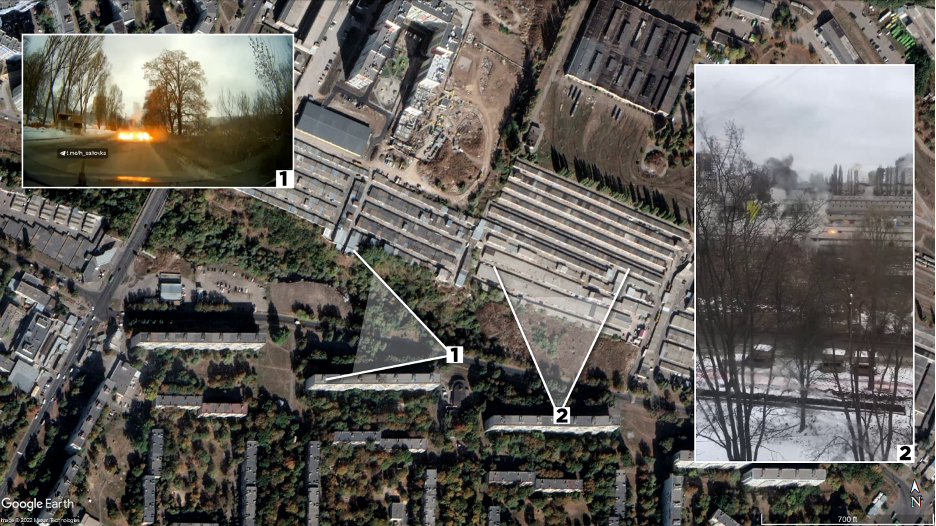Geolocating Russia’s indiscriminate shelling of Kharkiv
February 28 shelling from Russia into Kharkiv resulted in at least eleven deaths in three separate neighborhoods.
Geolocating Russia’s indiscriminate shelling of Kharkiv
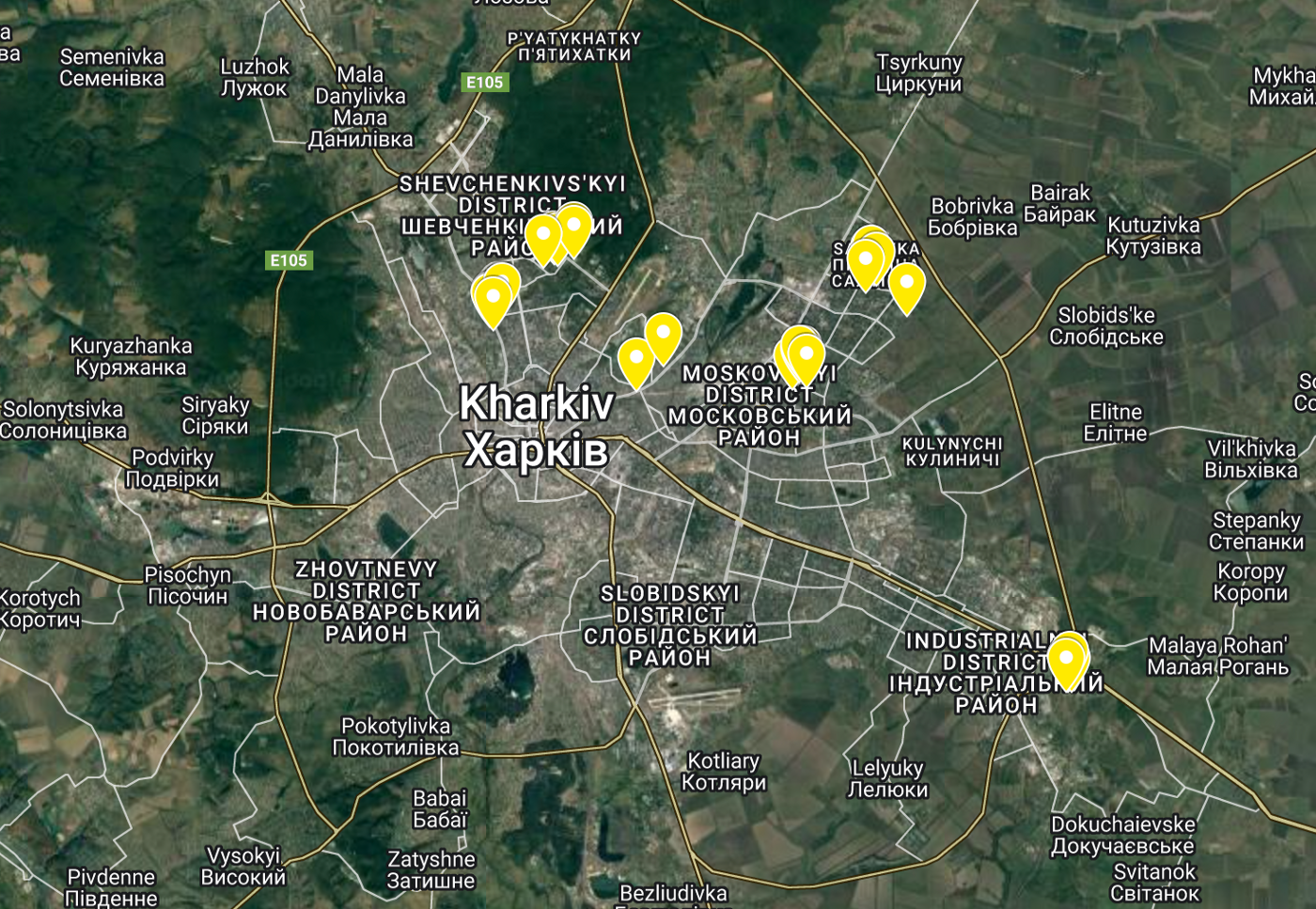
BANNER: Geolocating areas of Kharkiv damaged by Russian shelling. (Source: DFRLab/Google Maps)
On February 28, 2022, Russia indiscriminately shelled Ukraine’s second largest city, Kharkiv, in an attack that claimed at least eleven civilian lives, wounding many more, and destroying homes. This incident was not isolated; as previously reported by the DFRLab, Russia has shelled the city since the beginning of the war.
Compared to attacks during previous days, though, the February 28 attack was significantly more violent and brazen in its targeting of highly populated civilian population areas. The DFRLab analyzed and geolocated available imagery of the attack, identifying three main neighborhoods affected by shelling. While other areas were also affected, the Saltovka, 6th Mikrorayon, and Horizont neighborhoods appeared the worst hit.
The DFRLab is mapping out areas of Kharkiv hit by artillery on Google Maps.
Geolocations
At 10:42am local time on February 28 in the eastern Kharkiv suburb of Horizont, a security camera at 128 Velika Kiltseva Street captured the moment when several explosions went off in rapid succession in the building’s adjacent parking lot and nearby pedestrian path.

At least four pedestrians were visible on the footpath behind the parking lot, all appearing to have sustained injury from the nearby explosions. In another video shot in Horizont, a dead body can be seen lying on the ground behind a Velmart supermarket, two hundred meters away from the security camera footage.
Horizont suffered at least two rounds of shelling, eventually causing serious damage to buildings in the southwestern part of the neighborhood.
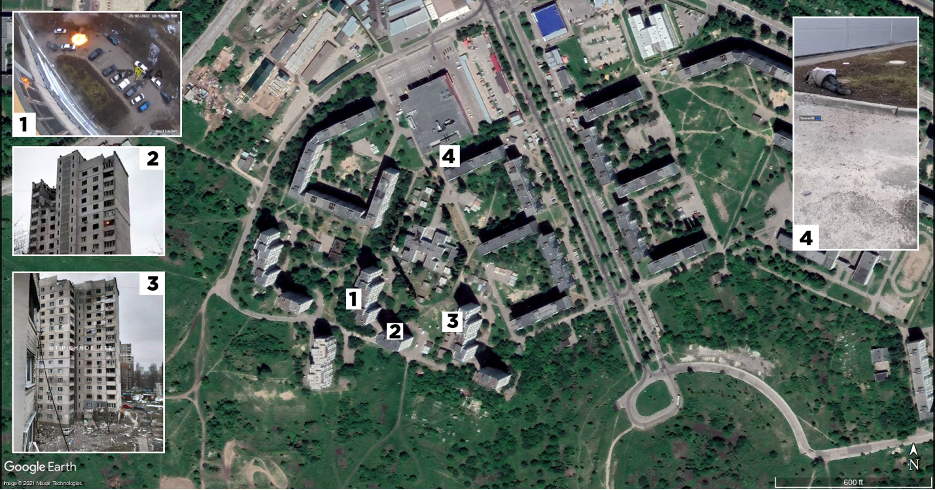
Along August 23rd Street near school number 135, in the district known as the 6th Mikrorayon, one of the grimmest scenes of the war up until then unfolded. In one spot, four people laid dead at a drinking water dispenser. By referencing Google Street View imagery, the DFRLab was able to pinpoint the location of the footage to where Ozerniy Pereulok meets August 23rd Street.
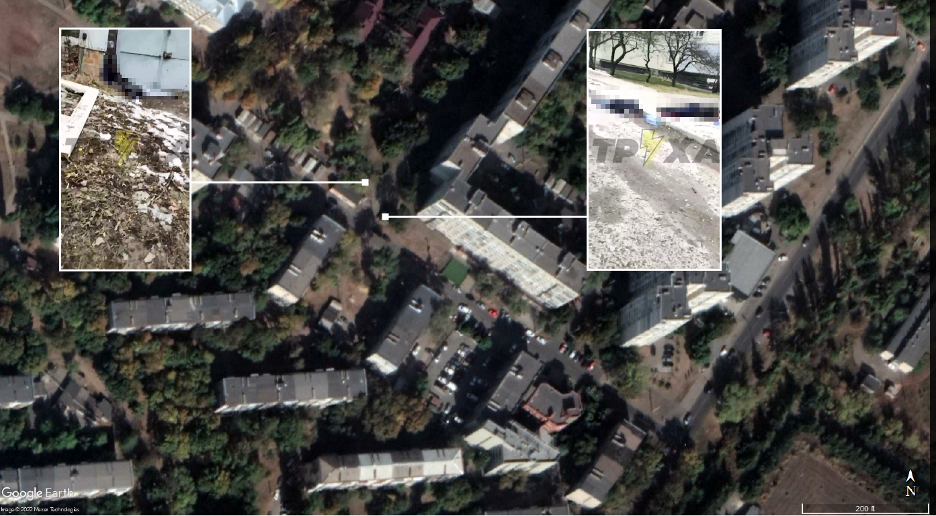
As with the attack on Horizont, the shelling of the 6th Mikrorayon affected a large area, destroying cars and damaging homes in addition to the human toll.
In the northern residential neighborhood of Saltovka, shelling hit a large garage area bordering on Buchmy Street. Given the large area that rocket artillery covers, nearby homes were also damaged. Dashcam footage and residents of the area captured the attack as it unfolded.
In other parts of Kharkiv, boosters the size of telephone poles from BM-30 300mm multiple launch rocket systems (MLRS) rained over the city, along with parts used to hold submunitions, also known as cluster bombs. Submunitions from BM-30 “Smerch” rockets were likely to blame for the carnage.
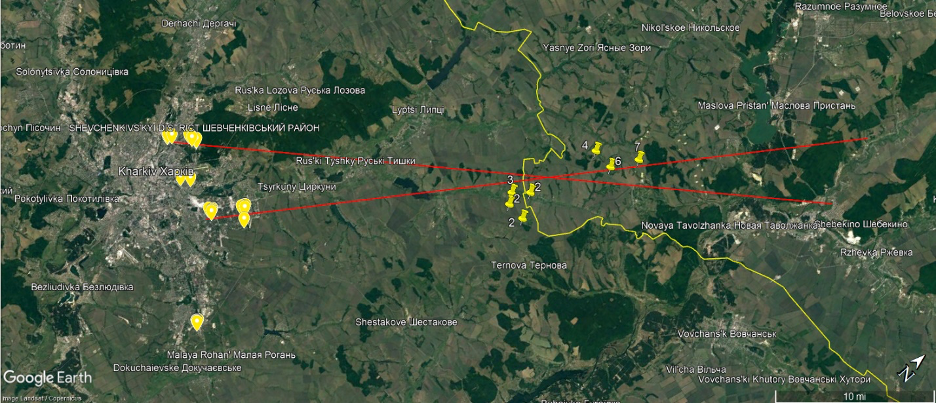
Following the debris patterns from Kharkiv city back into the Russian-Ukrainian border area, several potential burn marks were visible in Planet Labs imagery from February 27. In the above graphic, each number by the yellow pins on the right corresponds to the amount of burn marks identified at each site. Other tracks in the snow indicated likely howitzer firing positions, but these were far outnumbered by rocket launch sites.
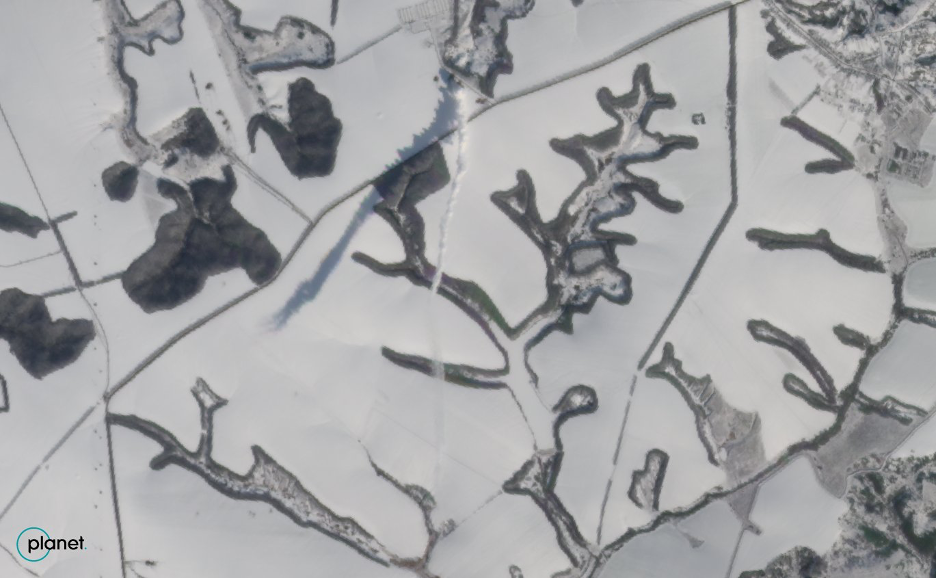
While these may not all be rocket artillery launch sites, some of them verifiably are, since Planet Labs imagery showed an MLRS launch site where the smoke plume from recently fired rockets was still visible. The effects of the wind on the smoke cloud made it difficult to track the exact destination of the rockets, but it appeared to point in the general direction of Kharkiv.
Cite this case study:
Michael Sheldon, “Geolocating Russia’s indiscriminate shelling of Kharkiv,” Digital Forensic Research Lab (DFRLab), March 1, 2022, https://medium.com/dfrlab/geolocating-russias-indiscriminate-shelling-of-kharkiv-deaccc830846.

